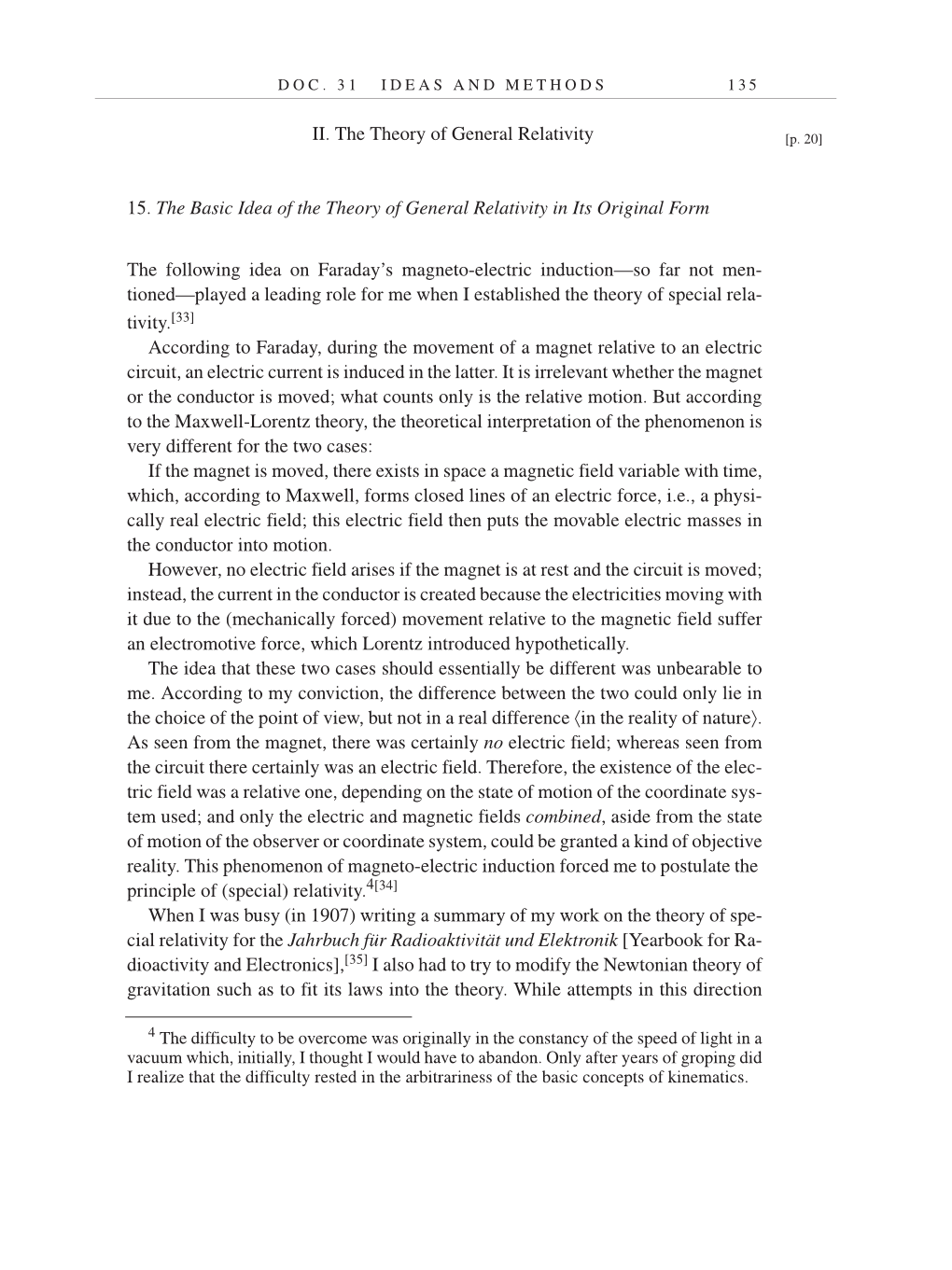D O C . 3 1 I D E A S A N D M E T H O D S 1 3 5
II. The Theory of General Relativity
15. The Basic Idea of the Theory of General Relativity in Its Original Form
The following idea on Faraday’s magneto-electric induction—so far not men-
tioned—played a leading role for me when I established the theory of special rela-
tivity.[33]
According to Faraday, during the movement of a magnet relative to an electric
circuit, an electric current is induced in the latter. It is irrelevant whether the magnet
or the conductor is moved; what counts only is the relative motion. But according
to the Maxwell-Lorentz theory, the theoretical interpretation of the phenomenon is
very different for the two cases:
If the magnet is moved, there exists in space a magnetic field variable with time,
which, according to Maxwell, forms closed lines of an electric force, i.e., a physi-
cally real electric field; this electric field then puts the movable electric masses in
the conductor into motion.
However, no electric field arises if the magnet is at rest and the circuit is moved;
instead, the current in the conductor is created because the electricities moving with
it due to the (mechanically forced) movement relative to the magnetic field suffer
an electromotive force, which Lorentz introduced hypothetically.
The idea that these two cases should essentially be different was unbearable to
me. According to my conviction, the difference between the two could only lie in
the choice of the point of view, but not in a real difference 〈in the reality of nature〉.
As seen from the magnet, there was certainly no electric field; whereas seen from
the circuit there certainly was an electric field. Therefore, the existence of the elec-
tric field was a relative one, depending on the state of motion of the coordinate sys-
tem used; and only the electric and magnetic fields combined, aside from the state
of motion of the observer or coordinate system, could be granted a kind of objective
reality. This phenomenon of magneto-electric induction forced me to postulate the
principle of (special)
relativity.4[34]
When I was busy (in 1907) writing a summary of my work on the theory of spe-
cial relativity for the Jahrbuch für Radioaktivität und Elektronik [Yearbook for Ra-
dioactivity and
Electronics],[35]
I also had to try to modify the Newtonian theory of
gravitation such as to fit its laws into the theory. While attempts in this direction
4
The difficulty to be overcome was originally in the constancy of the speed of light in a
vacuum which, initially, I thought I would have to abandon. Only after years of groping did
I realize that the difficulty rested in the arbitrariness of the basic concepts of kinematics.
[p. 20]
